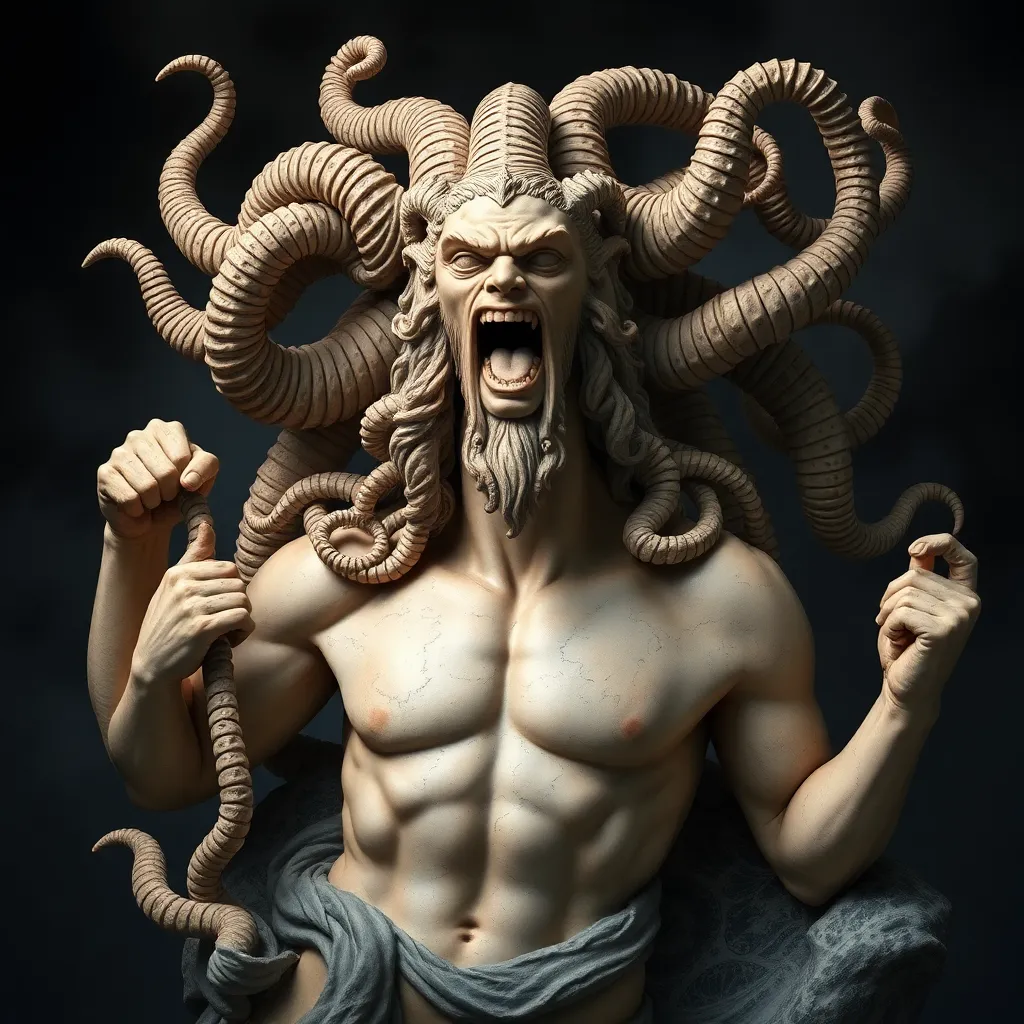Perseus and Medusa: Unraveling the Myth of the Gorgon
I. Introduction
The myth of Perseus and Medusa is one of the most captivating tales in Greek mythology, intertwining themes of bravery, transformation, and the struggle between good and evil. This narrative not only highlights the heroic feats of Perseus but also delves into the tragic story of Medusa, a creature cursed by the gods. The importance of this story transcends its narrative; it serves as a reflection of ancient Greek values and beliefs. In this article, we will explore the origins of Medusa, the heroic journey of Perseus, and the lasting impact of this myth on culture and art.
II. The Origins of Medusa
Medusa was once a beautiful maiden, admired for her exquisite hair and charm. She was one of the three Gorgon sisters, daughters of Phorcys and Ceto. However, her life took a tragic turn when she was cursed by the goddess Athena. This punishment was a result of Medusa’s violation of the goddess’s sacred temple, where she was seduced by Poseidon. Athena transformed Medusa into a Gorgon, a creature with snakes for hair and a gaze that could turn anyone to stone.
The role of the gods in Medusa’s fate is crucial. While Poseidon’s actions led to her initial downfall, it was Athena’s wrath that sealed her tragic fate. Medusa’s transformation serves as a cautionary tale about the consequences of defying the divine and the complexities of beauty and monstrosity in Greek mythology.
III. The Heroic Tale of Perseus
Perseus, the son of Zeus and Danaë, was destined for greatness from his birth. A prophecy foretold that he would one day slay his grandfather, Acrisius, the king of Argos. To prevent this fate, Acrisius cast Danaë and her newborn son into the sea in a chest. However, they were saved by the sea god Poseidon and brought to safety on the island of Seriphos.
As Perseus grew, he became a symbol of heroism. When the king of Seriphos, Polydectes, desired Danaë and sought to eliminate Perseus, he tricked the young hero into promising to bring him the head of Medusa. This quest marked the beginning of Perseus’s heroic journey.
IV. The Quest for the Gorgon
Perseus faced numerous challenges on his quest to slay Medusa. He first sought the help of the Gray Sisters, three prophetic women who shared one eye and one tooth among them. By stealing their eye, Perseus forced them to reveal the location of the Gorgons.
To aid him in his quest, Perseus received several divine gifts:
- A reflective shield from Athena, which allowed him to view Medusa’s reflection and avoid her petrifying gaze.
- A magical sword from Hermes, capable of cutting through anything.
- Winged sandals from Hermes, enabling him to fly effortlessly.
- A helm of darkness from Hades, granting him invisibility.
Equipped with these gifts, Perseus journeyed to the dark lair of the Gorgons, where he prepared for the confrontation with Medusa.
V. The Encounter with Medusa
Medusa’s lair was a terrifying place, filled with the remnants of those who had fallen victim to her gaze. She was described as a fearsome creature, her hair a writhing mass of snakes, and her eyes filled with rage and sorrow. The moment of their encounter was fraught with tension as Perseus approached her lair with caution.
Using his reflective shield, Perseus was able to avoid looking directly at Medusa. He struck swiftly with his sword, beheading her in a single blow. The battle was not just a test of strength but also of strategy, showcasing the importance of intellect in overcoming fearsome foes.
VI. Medusa’s Legacy
After Perseus beheaded Medusa, her legacy continued in unexpected ways. From her blood sprang forth two significant figures: Pegasus, the winged horse, and Chrysaor, a giant wielding a golden sword. These offspring symbolize the duality of creation and destruction, reflecting the complex nature of Medusa herself.
Medusa’s story did not end with her death. She became a symbol of protection and power, often depicted in art and architecture. Her image was used to ward off evil, demonstrating how her legacy evolved from that of a monster to a powerful icon.
VII. Interpretations and Adaptations
Throughout history, Medusa’s character has inspired countless works of art and literature. In ancient times, she was often portrayed as a fearsome creature, while modern interpretations have explored her as a tragic figure, victimized by the gods and society.
Some notable interpretations include:
- Art: Medusa has been depicted by artists such as Caravaggio and Jean-Baptiste Carpeaux, highlighting her beauty and horror.
- Literature: Modern retellings often focus on Medusa’s perspective, exploring themes of victimization and empowerment.
- Psychological and Feminist Readings: Scholars have analyzed Medusa’s story through various lenses, viewing her as a symbol of female rage and the consequences of patriarchal oppression.
VIII. Conclusion
The myth of Perseus and Medusa serves as a profound narrative within Greek mythology, reflecting the complexities of heroism, fate, and transformation. The story’s enduring nature speaks to its universal themes, resonating through centuries of art and literature. Perseus stands as a hero who confronts fear and adversity, while Medusa’s tale invites reflection on beauty, monstrosity, and the nature of power.
As we explore these ancient narratives, we gain insight into the cultural values of the time and their relevance to contemporary society. The myth of Perseus and Medusa continues to inspire and provoke thought, inviting all to delve deeper into the rich tapestry of Greek mythology.




